How to choose the right PCB material in your electronic project?
1. PCB material types
FR-4
Rogers material
Metal core
HDI board
High tg material
2. How to chooose the right PCB material for your boards
3. Your electronic project with various PCB material in PCBGOGO
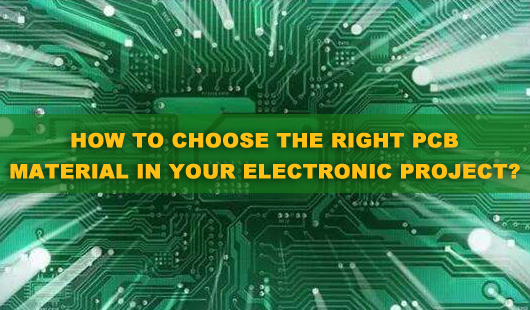
With the development of electronic technology, the circuit board plays such an important role in electronic products, medical devices, industrial equipment, safety and security equipment and so on. So what kinds of PCB materials you choose will make a great effect on the functionality, manufacturability and life cycle of your board.
PCB material types
When it comes to PCB materials, there are several types you can use, such as FR-4 material, FR-4 high tg, metal core, polyimide, rogers material, as well as HDI board, which are the most popular and have been widely used. However, PCBGOGO uses the following materials for PCB manufacturing:
FR-4
Rogers material
Metal core
HDI board
High tg material
In general, we use the standard FR-4 material for the printed circuit boards to help customers reduce product costs, which is a fine option, because FR-4 material is affordable and effective for many applications. However FR-4 material is not the only type of PCB material, when it comes high speed designs, microwave, high-tech applications and LED lighting, you will find that standard FR-4 can’t meet the demands of above situations. Needless to say, you need to consider how to choose the right material in your PCB manufacturing, so we will make a detailed introduction about PCB materials that have been used in PCBGOGO.
FR-4
In fact, FR-4 refers to a grade of material rather than a material, which is a composite material for glass-reinforced epoxy laminate material. FR-4 is made up of woven fiberglass cloth with an epoxy resin binder that is flame resistant. And FR stands for flame retardant, it denotes that the material complies with the standard UL94V-0.
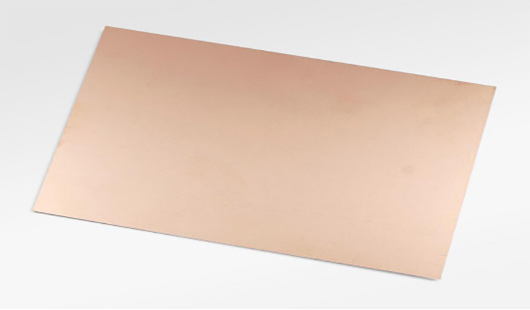
For electronic engineers and designers, FR-4 glass epoxy is a popular and versatile high-pressure thermoset plastic laminate grade with good strength-to-weight ratios. With near zero water absorption, FR-4 is most commonly used as an electrical insulator possessing considerable mechanical strength. The material is known to retain its high mechanical values and electrical insulating qualities in both dry and humid conditions. These attributes, along with good fabrication characteristics, lend utility to this grade for a wide variety of electrical and mechanical applications. So FR-4 can perform well in most environmental conditions.
Note: FR-4 material provides the fundamental standard for PCB substrates, keeping a widely effective balance between cost, durability, performance, manufacturability, as well as electrical properties.
Rogers material
Rogers is a company that manufactures the laminate materials used for circuit boards. Most circuit boards are made of a material known as FR4 (Flame Retardant level 4), which is a glass fiber / epoxy composite, with copper foil laminated on one or both sides.
Rogers will sell you FR-4 laminates (FR-4 core with copper laminate), they are better known for cores with better high frequency properties, such as PTFE (Teflon). They’re more expensive than fiber glass, but are less lossy at high frequencies. This makes them good for RF circuit boards.
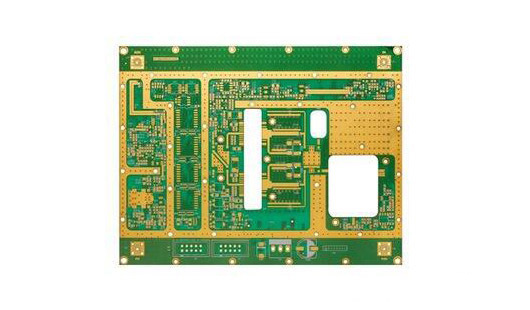
Note: rogers materials plays an important role in your designs due to performance and electrical properties. There are a lot of advantages for rogers materials, such as, low electrical signal loss, lower dielectric loss, better thermal management, wide range of Dk (dielectric constant) values (2.55-10.2), improve impedance control, as well as low outgassing for space applications, so rogers materials have been widely used in high speed designs, RF, microwave, or mobile applications.
Metal core
Metal core PCBs or MCPCBs are the types of PCBs that contain a base metal material as opposed to the traditional FR4. The core is usually designed to redirect heat away from the components. The metal core is composed of a metal plate of a particular thickness which dissipates heat.
The metal core of the thermal PCB can be aluminum (aluminum core PCB), copper (copper core PCB or a heavy copper PCB) or a mixture of special alloys. The most common is an aluminum core PCB.
The thickness of metal cores in PCB base plates is typically 30 mil - 125 mil, but thicker and thinner plates are possible. MCPCB copper foil thickness can be 1 - 10 oz.
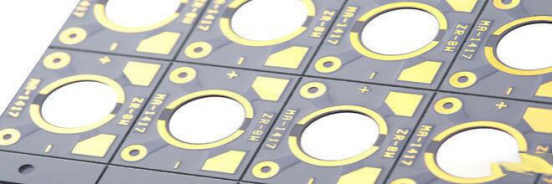
Note: In metal core PCB, there is a single layer of copper with is bonded to a layer of conductive dielectric material, which is further bonded to a thick metal layer (typically Aluminum 5052, Aluminum 6061, or Copper C110Metal core PCBs provide thermally efficient and mechanically robust construction that a solid-state relay construction demands. Manufacturers are discovering new types of metal core PCB material, especially dielectrics, to meet the demands of high thermal performance that can even out-perform existing ceramic-based designs.0).The material structure of metal core PCBs can be used in solid-state relays of mounting configurations in some control applications, which is impossible for ceramic substrates.
When cooling of multiple LEDs is a design priority, metal core PCB can be an excellent solution. They are becoming more and more common in a variety of lighting applications – for home, workplace, and vehicle. Despite metal core PCBs are subject to certain design restrictions, the manufacturing process is the same as most other PCBs, and it is more simple in some ways.
HDI material
HDI stands for High Density Interconnector, a circuit board which has a relatively high line distribution density using the micro-blind and buried hole technology. It plays an important role in improving electrical performance and reducing the weight and the size of equipment.
HDI PCB, one of the fastest growing technologies in PCB industry. It includes blind and buried vias as well as microvias, which are .006 or less in diameter. And the HDI PCBs PCBGOGO offers include the following highly requested characteristics:
Blind vias and /or buried vias
Via in pad
Through vias from surface to surface
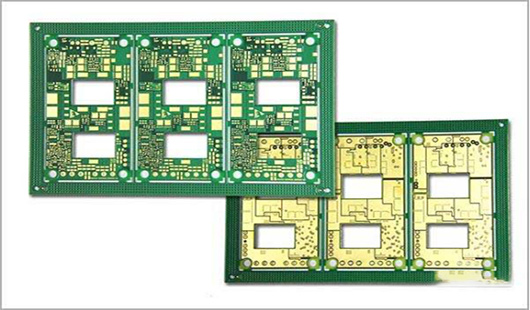
Note: HDI technology is increasingly being the solution for smaller, more efficient and more durable PCBs, which allows for smaller and lighter products that do more faster than ever before with blind vias and buried vias that can be stacked, staggered, and integrated with microvias.
HDI technology can make a great effect on improving functionality in smaller consumer products, denser BGA and QFP packages, as well as lowered heat transfer included stress.
High Tg material
As you know, the base material (polymer or glass) is shifting from a glassy, solid, rigid state to rubbery state when the temperature goes up to a certain area, so the temperature just at this moment is called the glass transition temperature (Tg). that is to say, Tg is a mechanical property that designates glass transition temperature, that is, the highest temperature at which the substrate remains rigid. In other words, the normal PCB substrate is no only softening, deformation, melting, as well as other phenomena at high temperatures, but also there is a sharp decline in mechanical and electrical properties, which can make an effect on product life.
Needless to say, a normal PCB FR4-Tg is 130-140 degrees, the medium Tg is greater than 150-160 degrees, and high Tg is greater than 170 degrees. High FR4-Tg will have better mechanical and chemical resistance to heat and moisture than standard FR4. The higher the Tg value, the better the temperature resistance of the material, so high Tg is more and more popular particularly in lead-free process.
Note: If you printed circuit board can not bear a thermal load no greater than 25 degrees centigrade below the Tg, you will need a high Tg PCB for your applications. What’s more, it also make sure safety with high Tg PCB if your product is operating in the 130 degrees centigrade range or higher. Needless to say, the main reason for high Tg PCB is the movement to RoHS PCB. So there are more and more PCB industries moving toward high Tg materials as the lead-free solder to flow needs higher temperatures.
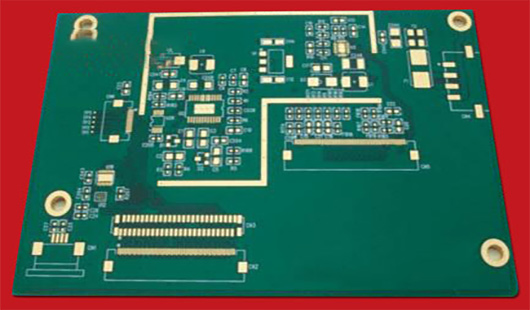
How to choose the right PCB material for your boards
When you choose the PCB materials, you need to take quality into consideration that is quite important in your board, because it can offer superior performance for the full duration of PCB’s expected lifespan. So you can choose the PCB materials based on your demands.
Standard FR-4: save product costs and is affordable and effective for many applications.
Rogers materials: if you need dielectric PCB properties in your boards, rogers materials is a good choice with higher performance and electrical properties, especially the power management, such as high speed designs, RF, microwave, or mobile applications.
Metal core: if you are making a electronic project of LED based products, choose the metal core in your boards. What’s more, metal core PCB is more and more common in a variety of lighting applications-for home, workplace, and vehicle.
HDI material: HDI technology is a good solution for smaller and lighter products, high-tech applications, denser BGA and QFP packages, as well as lowered heat transfer included stress.
High Tg: If there is a higher power density in electronic products and heat generation will tend to disturbing heat sink or other parts of the products, so high Tg PCB is the best solution. What is more, you can find that high Tg PCBs are applied in electronic industries which can operate in relatively high temperatures as high Tg PCB are more and more popular in recent years.
Your electronic project with various PCB material in PCBGOGO
As stated above, there are a lot of PCB materials that you can be used in your boards, and not matter what kinds of PCB materials you choose, PCBGOGO can offer you the lowest possible costs as well as the very finest in high quality PCB fabrication and high quality PCB assembly.
If you have any question, please feel free to contact us via service@pcbgogo.com, we will be happy to help you.


